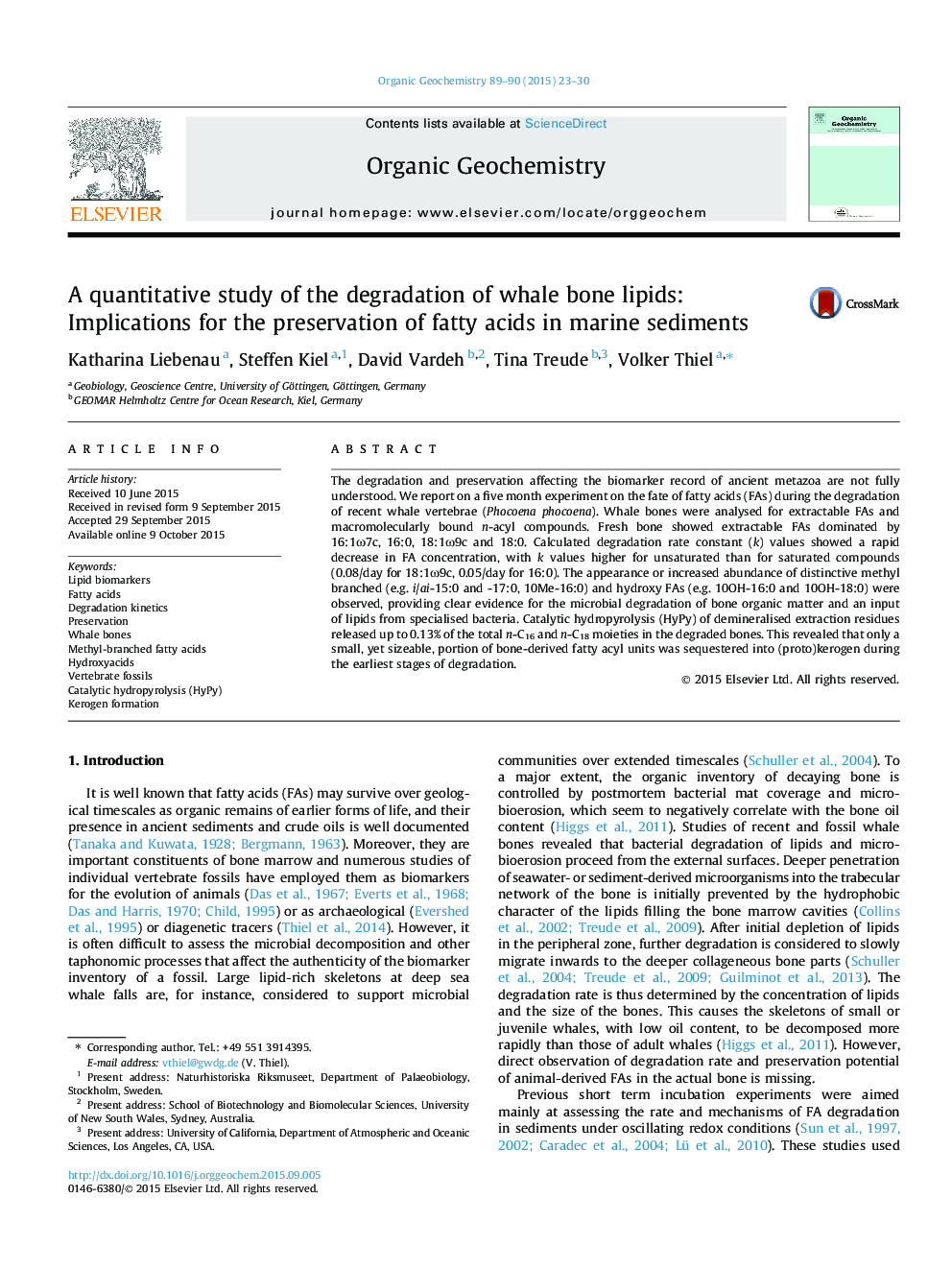| Article ID | Journal | Published Year | Pages | File Type |
|---|---|---|---|---|
| 5161879 | Organic Geochemistry | 2015 | 8 Pages |
Abstract
The degradation and preservation affecting the biomarker record of ancient metazoa are not fully understood. We report on a five month experiment on the fate of fatty acids (FAs) during the degradation of recent whale vertebrae (Phocoena phocoena). Whale bones were analysed for extractable FAs and macromolecularly bound n-acyl compounds. Fresh bone showed extractable FAs dominated by 16:1Ï7c, 16:0, 18:1Ï9c and 18:0. Calculated degradation rate constant (k) values showed a rapid decrease in FA concentration, with k values higher for unsaturated than for saturated compounds (0.08/day for 18:1Ï9c, 0.05/day for 16:0). The appearance or increased abundance of distinctive methyl branched (e.g. i/ai-15:0 and -17:0, 10Me-16:0) and hydroxy FAs (e.g. 10OH-16:0 and 10OH-18:0) were observed, providing clear evidence for the microbial degradation of bone organic matter and an input of lipids from specialised bacteria. Catalytic hydropyrolysis (HyPy) of demineralised extraction residues released up to 0.13% of the total n-C16 and n-C18 moieties in the degraded bones. This revealed that only a small, yet sizeable, portion of bone-derived fatty acyl units was sequestered into (proto)kerogen during the earliest stages of degradation.
Keywords
Related Topics
Physical Sciences and Engineering
Chemistry
Organic Chemistry
Authors
Katharina Liebenau, Steffen Kiel, David Vardeh, Tina Treude, Volker Thiel,
